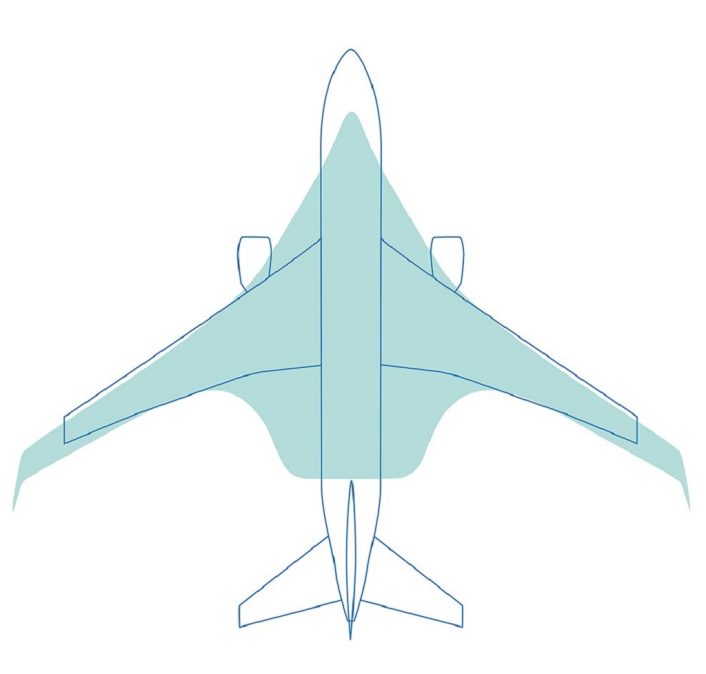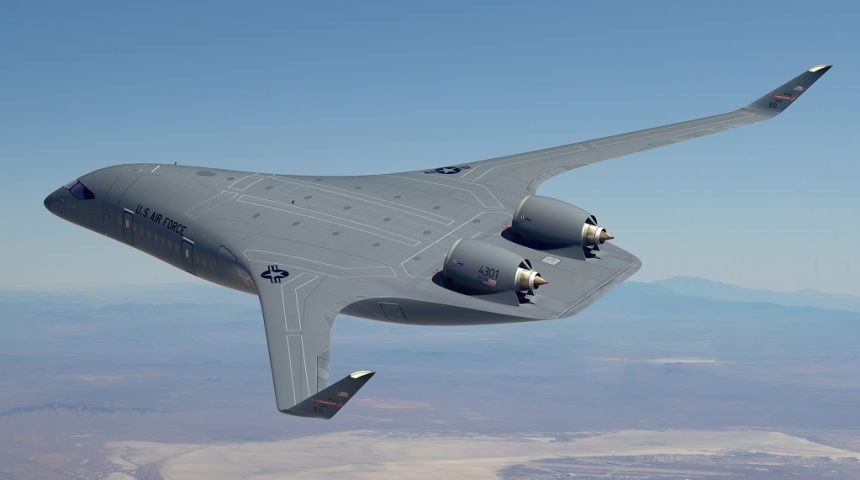JetZero was selected to develop a prototype that will help to mature BWB technology and demonstrate its capabilities.
The Department of the Air Force announced the selection of JetZero for the next phase of a blended wing body prototype aircraft project on August 16, 2023. The effort aims to mature BWB technology and demonstrate its capabilities, giving the department and commercial industry more options for future air platforms.
With a design that differs from a traditional tube-and-wing aircraft, the BWB blends the aircraft body into its high-aspect-ratio wing, decreasing aerodynamic drag by at least 30% and providing additional lift. This increased efficiency will enable extended range, more loiter time, and increased payload delivery efficiencies, capabilities that are vital to mitigating logistics risks, especially in a possible fight over the Pacific Ocean.
“Blended wing body aircraft have the potential to significantly reduce fuel demand and increase global reach,” said Secretary of the Air Force Frank Kendall. “Moving forces and cargo quickly, efficiently, and over long distance is a critical capability to enable national security strategy.” In fact, according to the USAF, the logistics aircraft types account for approximately 60% of the Air Force’s total annual jet fuel consumption, so the capabilities of the BWB could make a huge impact.
The Californian startup JetZero unveiled a multimission design, called Z5, targeting the midsize commercial and military tanker-transport markets back in April. The BWB first appeared as a concept in the late 1980s, but so far has failed to gain traction despite promising performance projections. Now JetZero believes this configuration is the best suited for the current midsize airliner market and U.S. Air Force needs.
JetZero’s Z-5 design, according to the Aviation Week’s report, is optimized for a range of at least 5,000 nm and up to 250 passengers. The all-composite aircraft has a wide single deck and high-aspect-ratio wing. Although this extends the wingspan to close to 200 ft, similar to an Airbus A330, the body length is shorter than a Boeing 767. Despite the overall size, JetZero says the midmarket aircraft “will be about half the weight and require half the power of aircraft it replaces, such as the 767.”

The company targets an entry into service in the 2030s thanks to the use of off the shelf technologies. In fact, the aircraft will be equipped with mostly conventional systems, simplifying development and reducing cost and risk. Fon an instance, the engines could be derivatives of the CFM Leap 1 or Pratt & Whitney PW1100G.
As outlined in the fiscal year 2023 National Defense Authorization Act, the Department of Defense plans to invest $235 million over the next four years to fast-track the development of this transformational dual-use technology, with additional private investment expected. The effort is the result of collaboration between the Department of the Air Force, the National Aeronautics and Space Administration, and the Defense Innovation Unit, with assistance from the DoD’s Office of Strategic Capital.
JetZero submitted its proposal for the $245 million cost-sharing program at the end of March with a complete conceptual design and will now move into the demonstration phase. The Z5 is being proposed also as a tanker, with the capability to carry up to twice the fuel of the KC-46 tanker on a maximum-range mission.
“It’s been a little over a hundred years since a few brave Airmen took to the skies and proved the first aerial refueling capability, extending the global reach of our Air Force. This announcement marks another game-changing milestone for the Air Force in our efforts to maintain the advantage of airpower effectiveness against any future competitors,” said Dr. Ravi Chaudhary, assistant secretary of the Air Force for Energy, Installations, and Environment. A former C-17 Globemaster III pilot and engineer, Chaudhary is leading efforts to ensure efficiencies in operational energy to build greater agility for theater commanders.
When the initial solicitation was released, the Air Force stated that the BWB “is one of the single most impactful technology opportunities for future U.S. Air Force aircraft, both in terms of capability improvement and greenhouse gas emissions reduction.” The conversion of the Air Mobility Command’s and Global Strike Command’s fleets to the BWB design would reduce annual fuel costs by $1 billion compared with kerosene at current prices, according to the officials.
The Air Force Operational Energy Office expects completion of initial flight testing as early as 2027. JetZero, meanwhile, is preparing to flight-test its subscale BWB demonstrator, a 23-ft-wingspan, 12.5%-scale vehicle funded under a 2021 contract awarded during an earlier round of NASA’s Sustainable Flight Demonstrator (SFD) program.









